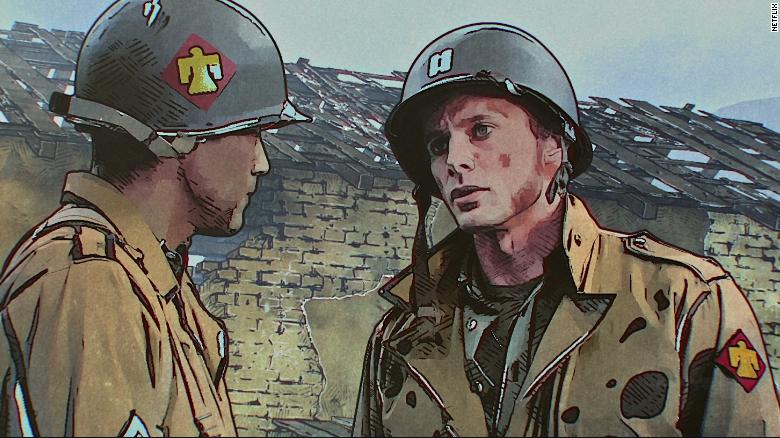“The Liberator” qualifies as an interesting experiment, and not much more — using digital animation over actual footage (an evolution of the process once known as rotoscoping) to create a highly stylized look, but then telling a World War II story in a stiff, uninspired way.
Those interested in the process should surely want to take a look at this Netflix miniseries, which was actually developed for the History channel. That said, it’s hard to suggest sticking around for this fact-based story of a one much-decorated infantry unit’s march across Europe, a project whose dialogue and presentation suffer from a lifelessness only enhanced by the washed-out nature of the animation.
Premiering on Veteran’s Day, the series was created by Jeb Stuart (“Die Hard”), based on the book “The Liberator: One World II Soldier’s 500-Day Odyssey,” which focuses on army officer Felix Sparks and his Oklahoma unit that consisted largely of Native Americans and Mexican-Americans. Their journey began in Italy and concludes with the horror of the Dachau concentration camp.
The technology at work, with the unwieldy name Trioscope Enhanced Hybrid Animation, establishes a comic-book-like feel. While the characters look real, if a little fuzzy, the backgrounds can be rendered in a way that creates animated tanks and explosions, without needing to construct sets or find locations.
The visuals, however, actually work against becoming wholly engaged in the drama, blurring the distinctions of the characters, who, beyond Sparks (played by “Damien” star Bradley James), are pretty thinly drawn (pun intended) to begin with.
Rotoscoping was championed by animator Ralph Bakshi on movies like “The Lord of the Rings” and “Fire and Ice,” and this certainly resembles a next-generation application of the process, which creates interesting possibilities going forward.
For starters, it would seem to be a way to produce certain kinds of action movies more economically — which, as Variety reported, was the motivation for transforming what would have been an eight-part live-action version of the story into its current four-part form.
Like any technical gimmick, though, a movie or TV show is only as good as the writing and characters. It’s there where “The Liberator” fails to come alive, coming across as a pale version of old black-and-white World War II movies, in a way that feels — as is so easy to do when the emphasis is on gee-whiz technological tools — like focusing on the wrapping and bow instead of the gift within them.
“The Liberator” premieres Nov. 11 on Netflix.
>>>>
